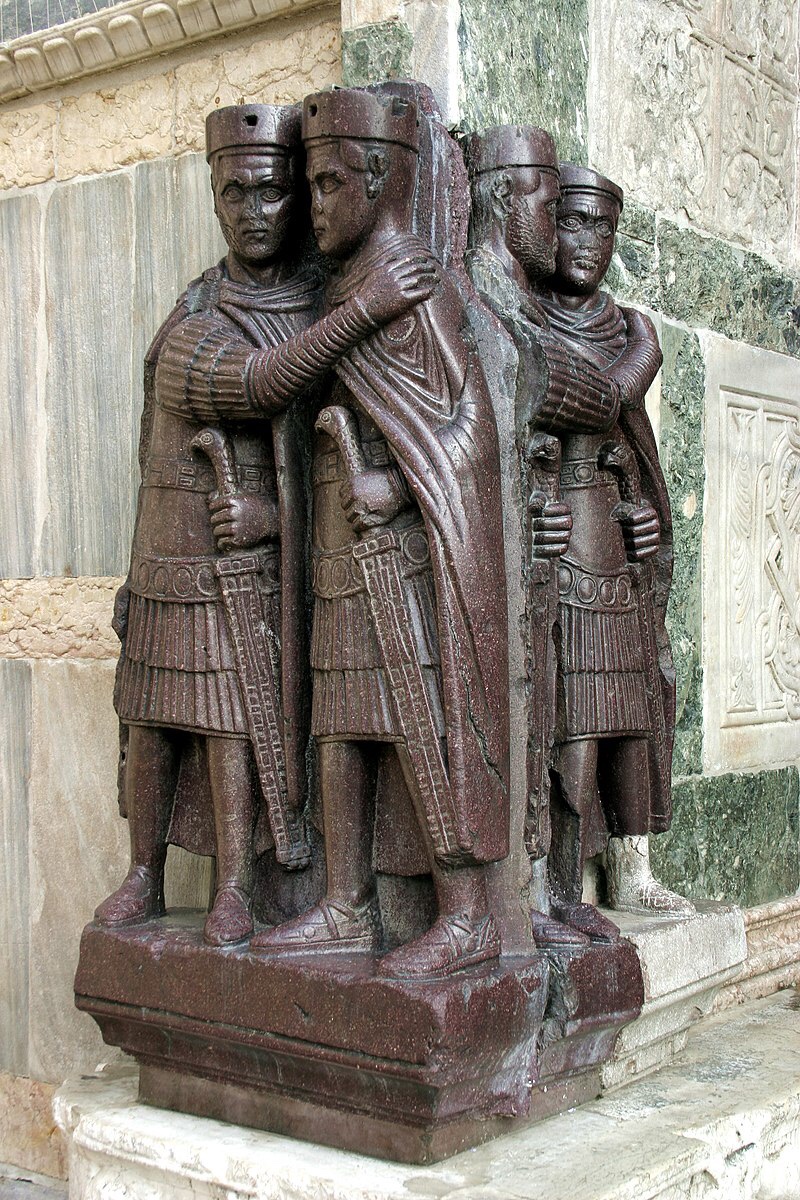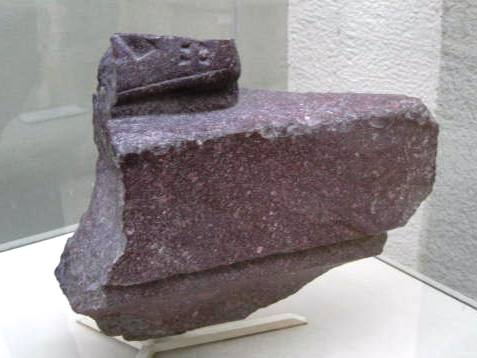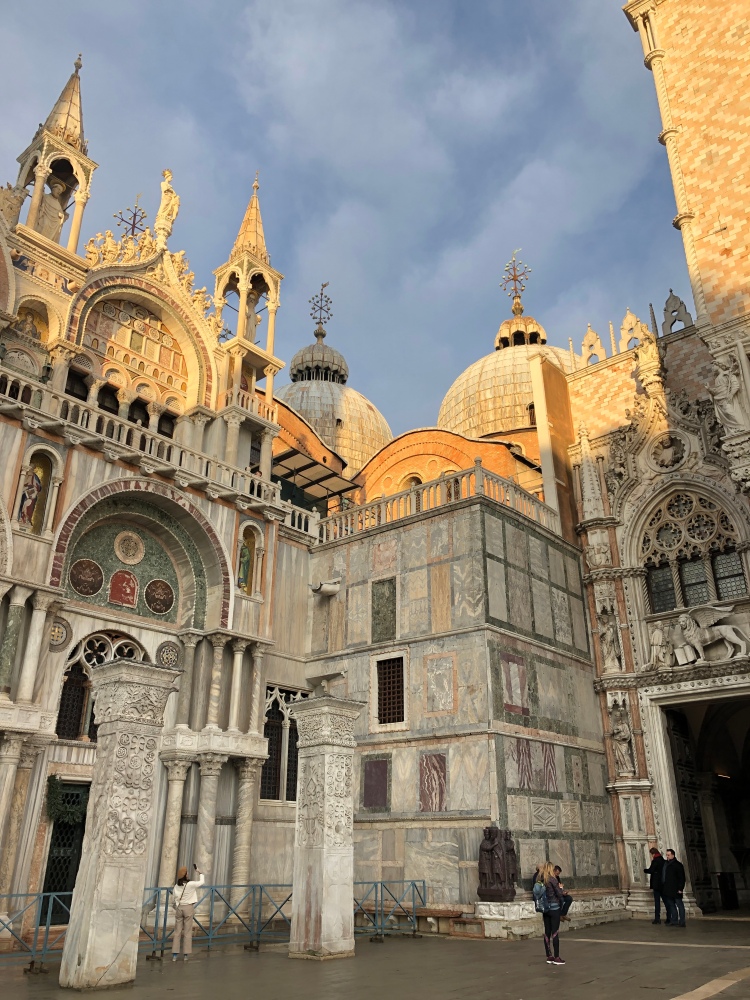
If you look carefully at the external facade of St Mark’s Basilica in Venice you see a vast open air art gallery. An opulent, detailed, bedecked building, more like an oriental palace than a church. Whilst the domes of St Mark dominate the Venetian skyline, along with the world famous bell tower, the three arched entrances into the church beckon the visitor into a huge, elaborate sanctuary designed to protect and honour the remains of St Mark, the evangelist and patron saint of Venice.
Venice’s trading relationship with the East, Africa, Cyprus, Constantinople and Greece influenced the architectural styles of her builders. St Mark’s Basilica is decorated with polished stones of many colours; sparkling white stone from Istria, purple porphyry from Egypt, hand-made iridescent mosaics from Byzantium, all add to the richness and visual impact of Venice’s principle place of worship.

In addition there are sculptures and carvings looted by the Venetians during their travels throughout the Eastern Mediterranean. A perfect example of this swag brought back to Venice as the ‘spoils of war’ is the pair of Egyptian statues known as The Tetrarchs.
The Tetrarchs were a group of four men who ruled the Roman Empire in the 3rd century after Christ. At that time the Roman Empire was so big that it was impossible for one man to control it. The idea created by Emperor Diocletian was to have not one Roman Emperor but two – one ruling in the east and the other in the west. Each of these two Emperors would have an assistant, an heir, ready to take over on the death of the Emperor. These sidekicks were each known as Caesar. Collectively this group of four were known as The Tetrarchs.
The porphyry statues date from the 3rd century AD and were stolen by the Venetians from Constantinople at the end of the Fourth Crusade. The Sack of Constantinople of 1204 went down in history as one of the most barbaric looting and pillaging events of the medieval era. The famous bronze horses of St Mark’s were also looted from Constantinople at the same time and brought back to Venice where they presided over St Mark’s Square, until Napoleon, ironically stole them and took them to Paris.
When the Tetrarchs arrived in Venice they were embedded into the south-west corner of St Mark’s Basilica – and have remained there ever since. The figures are dressed in military clothing, they have a flat, two dimensional style, similar to the characters in the Lewis chess set. There is a foot missing from one of the figures. This foot was found in the 1960s during an archaeological dig in Istanbul. The foot is now displayed in the Istanbul Archaeological Museum, whilst the rest of the carving remains solidly attached to the wall of St Mark’s in Venice. A story of theft and pillage from almost 800 years ago…..


Notes:
- There’s a story behind every detail in Venice – for example: Venice – there’s treasure around every corner….
- A brief explanation of The Tetrarchs – in this You tube video…https://youtu.be/6cwf8e_RSfw
- Detail from a superb ‘after hours’ tour of St Mark’s Basilica. The Magic of St Mark’s Basilica, Venice


- 30-01-2019
- 10-08-2020
Just one of many articles about Venice – why not carry on reading with: Venice – there’s treasure in every church

Most interesting, Janet. Is there ANYTHING you cant turn into a fascinating account??!
I think “Tetrarch” is a lovely word – and with an interesting derivation, as it appears both in Olde English literature (“tetrarche” – “ruler of one of four divisions of a kingdom or province,”) in Latin (“tetrarcha”) and in Greek “tetrarkhes” – from tetra- “four” and arkhein “to rule”).
I look forward to the next lesson!
John
LikeLike
Fascinating information as usual, oh Educated Traveller!
LikeLike